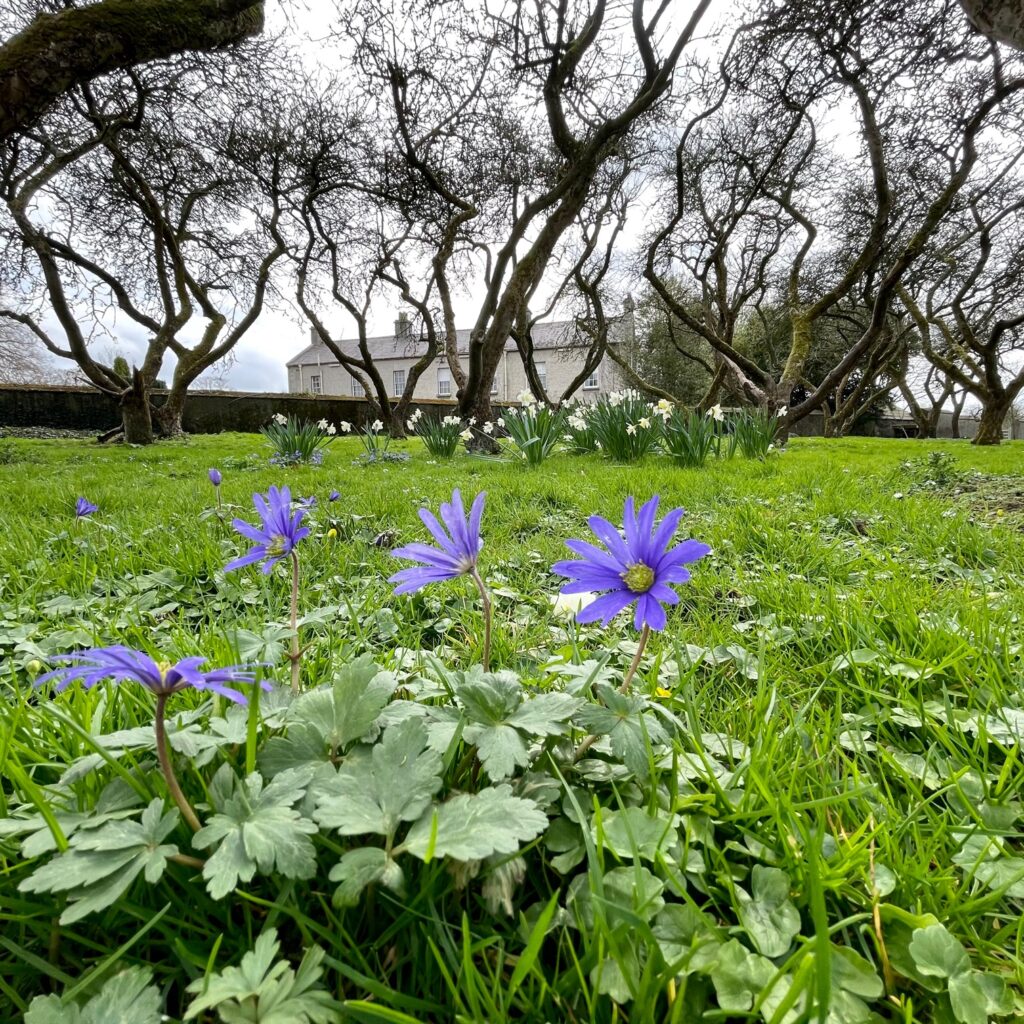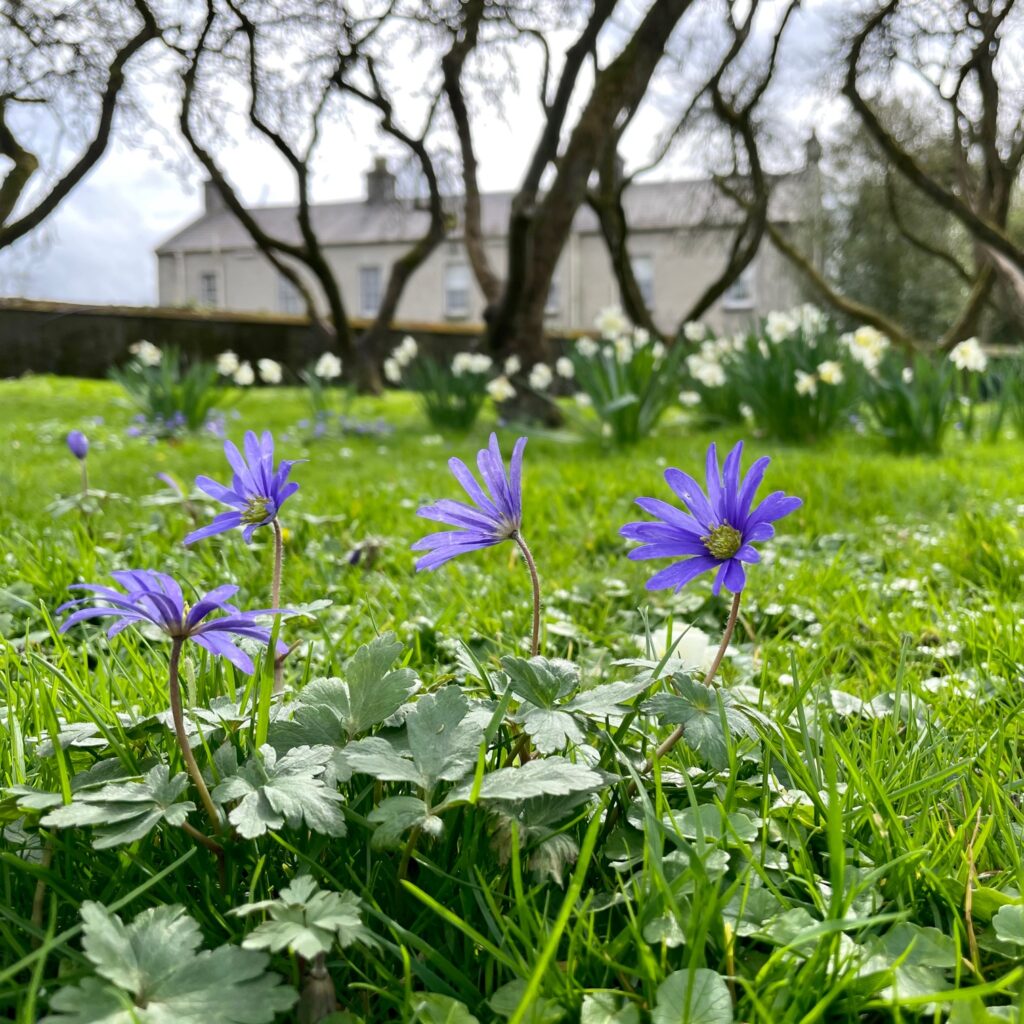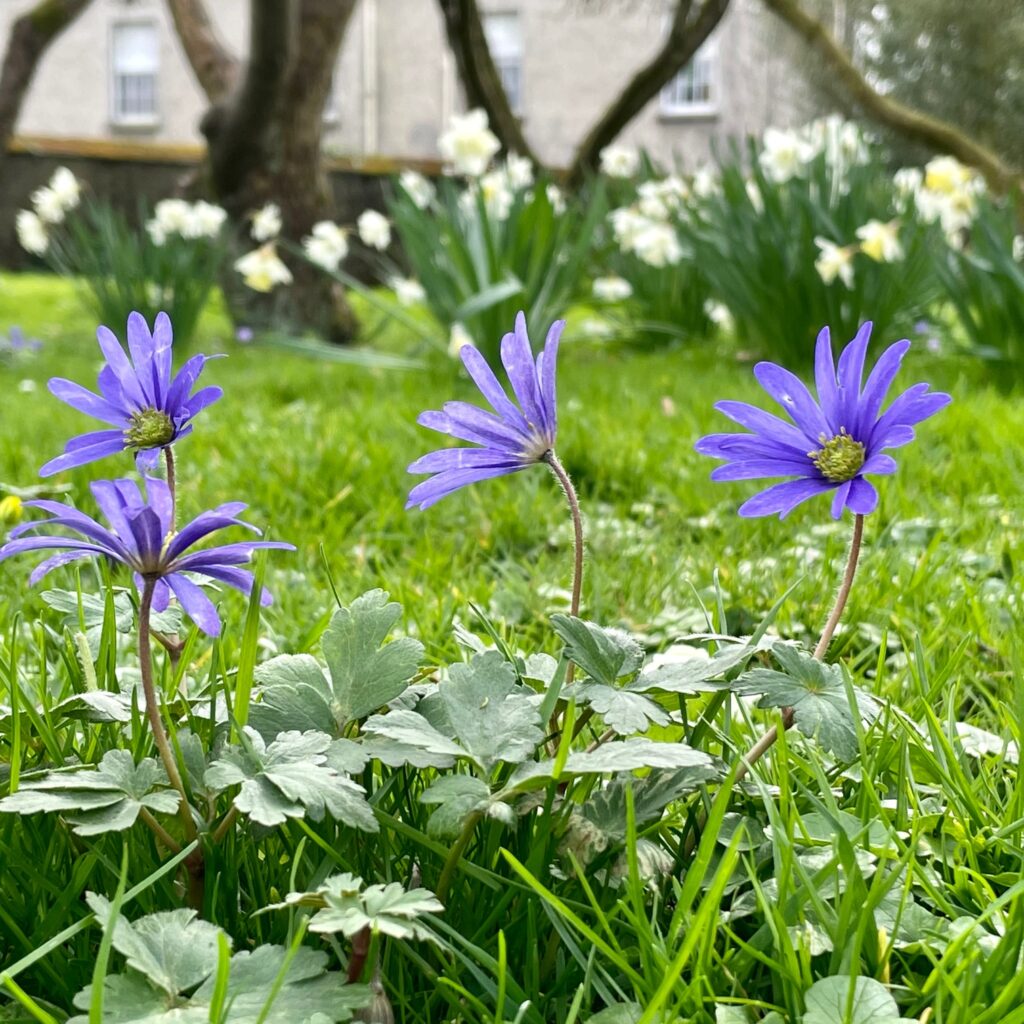Mar
27
1 iPhone, 1 Scene, 3 Lenses, 3 Photos, 3 Stories — Why Zoom Range Matters
Filed Under Photography on March 27, 2021 at 3:14 pm
I’ve spoken a lot on recent Let’s Talk Photo episodes about how my iPhone has become my primary camera, and how the ultra-wide angle lens is one of the features of the recent iPhones that excites me most. The reason why is simple — different focal lengths (zoom levels) give you different perspectives, and you can’t compensate for that by moving closer or further away from your subject. When I’m shooting artistically, zooming really isn’t about getting closer, I have feel for that — it’s about controlling the background by altering the perspective (literally).
Anyway, I was out walking this morning and came across a scene that illustrates the point nicely. I was on the grounds of St. Patrick’s College in Maynooth (well within my 5km limit and socially distancing like a responsible citizen) when I noticed that both the blue Wood Anemones and some white Daffodils were in bloom in the old apple orchard. That presented a scene with three interesting things — the two different types of flower, and the gnarly trunks of the old apple trees.
I made a point of taking the same photo with each lens to see how that changed the scene, and hence, the story the photo told. Ordinarily I would have kept the best, shared it on Twitter, and then deleted the other two, but given recent podcast episodes, I kept all three so I could use them as a practical example instead.
For context, I shoot with an iPhone 12 Pro these days, and it has three lenses that are accessed on the phone by setting the magnification to 0.5x for what Apple calls the ultra-wide lens, 1x for what Apple calls the wide lens, and 2x for what Apple calls the telephoto lens.
Let’s start with the ultra-wide view. Like a good flower photographer I lay down on my belly in front of these small little flowers so I could shoot them at their level, and that let me capture all three elements in the scene that interested me simultaneously — the blue Anemones in the foreground, the white Daffodils behind them in the mid-ground, and the gnarly tree trunks as a background.

In this version the Anemones and the gnarly trees they’re growing under steal the show, with the Daffodils acting as the proverbial backing vocals. This photo is all about the scene as a whole, the big picture — it’s blue Anemones under old trees along with some white Daffodils.
Next, let’s look at the default 1x or wide lens. The blue Anemones are now the only real subject, and both the trees and Daffodils become hints of the setting. They definitely contribute to the feel of the photo, but they’re not going to draw the viewer’s eye. They are not both the proverbial backing vocals. This shot is much more about the Anemones than the ultra-wide was, and hence, less about their setting.

Finally, we come to the 2x version. We’ve lost the tree branches completely, the background now only contains the tree trunks, and the white Daffodils have been thrown out of focus, and relegated to background elements. The Daffodils now provide the smallest hint of context, while the shot really is just about the blue Anemones.

So, what affect did changing the zoom have?
At an optics level, it had two effects — firstly, the ultra-wide compressed the background so there was more background in the scene than ‘normal’, while the telephoto did the opposite, it magnified the background, so just a small part of the scene was stretched to fill the entire background of the image.
Secondly, the depth of field shrinks the more you zoom in. In the ultra-wide the DOF is deep enough to get the blue Anemones which are right in front of the lens, the Daffodils in the mid ground, and the gnarly branches in the background all into reasonable focus simultaneously. In the regular wide shot the bit if the trees that’s left in view is really very our of focus indeed, and even the Daffodils in the mid-ground are nowhere near sharp anymore. In the telephoto shot, the branches are gone from the frame completely, the Daffodils are very out of focus, and even the grass a foot or two behind the Anemones isn’t sharp anymore. The only thing left sharp is the blue Anemones.
The optics are important to understand, but the reason want to understand them is to enable you to make artistic choices. Given the scene in front of me, what do I want to do? Do I want to exclude the background and draw the viewer’s eye to just a single subject? Do I want to emphasise the subject, but leave some context, or do I want to emphasise both the subject and the setting? None of those options are universally right or wrong, they’re just options for you to choose from so your image can tell the story you want to tell.
Bottom — don’t zoom to avoid walking, zoom to control your background so your photo tells the story you want it to!






